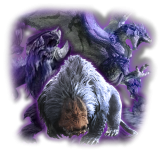Monster Hunter Wilds - All Confirmed Monsters Guide & Weakness Chart
-
Bundle

Introduction
Welcome to MH Wilds: Monsters guide. In this article, we will explore all monsters weaknesses, location, difficulty and provide essentials tips & tricks to help you forge the best strategy. Having the knowledge on these beasts will make your hunting journey a breeze.
Table of Contents
In this guide, we will cover the following subjects:
- Weakness Chart
- Monsters List
- Dynamic Environments
- Monsters Classification
- Monsters Elements
- Monster Difficulty
- Tips & Tricks
- FAQ
- Final Thoughts
Weakness Chart
Let's go over a detailed chart of weaknesses for the monsters in MH Wilds.
| Monster | Weakness | Type | Element | Location | Difficulty |
| Ajarakan | Ice/Water | Brute | Fire | Oilwell Basin | High |
| Arkveld | Dragon | Flying Wyvern | Dragonblight | All Locations | Extreme |
| Balahara | Thunder | Leviathan | Water | Windward Plains | Medium |
| Chatacabra | Ice/Thunder | Amphibian | None | Windward Plains | Low |
| Congalala | Fire | Fanged Beast | None | Scarlet Forest. | Medium |
| Doshaguma | Fire | Fanged Beast | None | Windward Plains | Low |
| Gore Magala | Fire/Lightning | Unique | Dark | Iceshard Cliffs | High |
| Gravios | Dragon | Brute Wyvern | Fire | Oilwell Basin | High |
| Guardian Arkveld | Dragon | Construct | Dragonblight | Ruins of Wyveria | Extreme |
| Guardian Doshaguma | Fire/Ice | Construct | None | Ruins of Wyveria | High |
| Guardian Fulgur Anjanath | Ice/Water | Construct | Thunder | Ruins of Wyveria | Hard |
| Guardian Odogaron | All Elements | Construct | None | Ruins of Wyveria | High |
| Guardian Rathalos | Dragon | Construct | Fire | Ruins of Wyveria | High |
| Gypceros | Fire | Bird Wyvern | None | Windsward Plains | Medium |
| Hirabami | Fire | Leviathan | Ice | Iceborn Cliffs | Medium |
| Jin Dahaad | Fire | Leviathan | Ice | Iceshard Cliffs | Extreme |
| Lala Barina | Fire | Temnoceran | None | Scarlet Forest | Medium |
| Nerscylla | Fire | Temnoceran | Poison | Iceborn Cliffs | Medium |
| Nu Udra | Water | Cephalopod | Fire | Oilwell Basin | High |
| Quematrice | Water | Brute Wyvern | Fire | Scarlet Forest | Medium |
| Rathalos | Dragon | Flying Wyvern | Fire | Windward Plains | Medium |
| Rathian | Dragon | Flying Wyvern | Fire | Oilwell Basin | Medium |
| Rey Dau | Ice/Water | Flying Wyvern | Thunder | Windward Plains | High |
| Rompopolo | Fire | Brute Wyvern | Poison | Oilwell Basin | Medium |
| Uth Duna | Thunder | Leviathan | Water | Scarlet Forest | Extreme |
| Xu Wu | Ice | Cephalopod | None | Ruins of Wyveria | High |
| Yian Kut-Ku | Ice/Water | Bird Wyvern | Fire | Scarlet Forest | Medium |
| Mizutsune | Thunder/Dragon | Leviathan | Water/Fire | Scarlet Forest/Ruins of Wyveria | High |
| Zoa Shia | Dragon | Construct | Fire/Thunder | Ruins of Wyveria | Extreme |
Having everything charted about the monsters in MH Wilds, we can continue with what are these monsters.
What are Monsters in MH Wilds?
In MH Wilds, monsters are massive creatures that roam each unique habitat. Much like previous games in the series, Monster Hunter Wilds has everything from smaller pack-based beasts to colossal Apex Monsters.
The creatures we listed below make up just a portion of the Wilds’ bestiary, with each monster offering distinctive combat patterns, elemental weaknesses, and lore-driven personalities.
Monsters List
➤ Chatacabra
Chatacabra is an Amphibian with incredibly strong forelimbs. Its ape-like posture and way of locomotion are akin to a simian Fanged Beast, most notably a Garangolm.
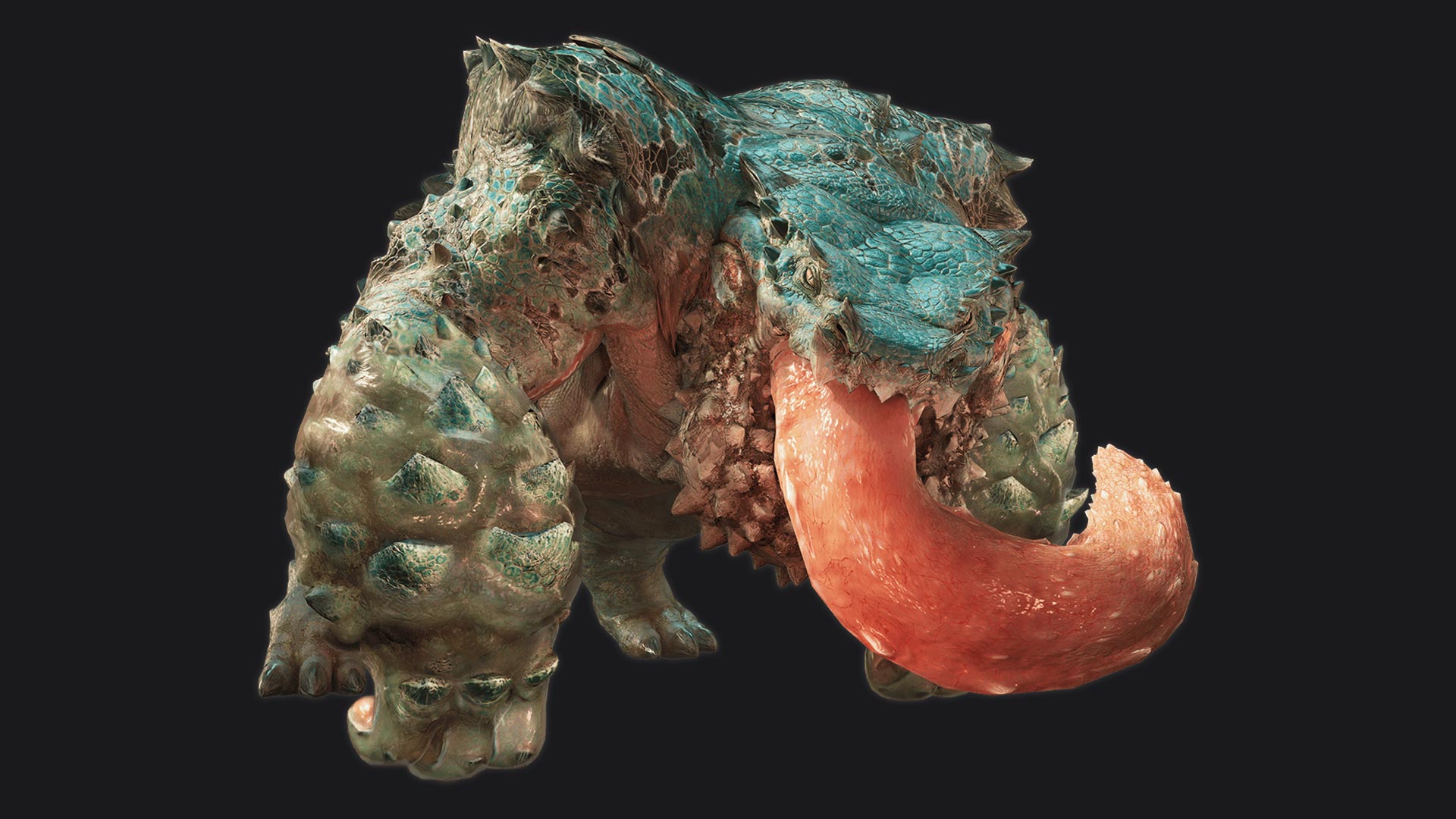
Chatacabra uses its long tongue to whip at enemies and to lick its own forelimbs, covering them in its own saliva. This saliva has adhesive qualities, allowing stone or other earthen materials to be affixed to its forelimbs, thus strengthening the monster even more by giving it more armor and increasing the power of its punches.
➤ Doshaguma
Doshaguma is a large monster with a bear-like figure. While fighting, these monsters will use their brute strength, and their powerful limbs. They can also use their fangs to bite, and they will usually go for a charge attack with their jaws wide open.
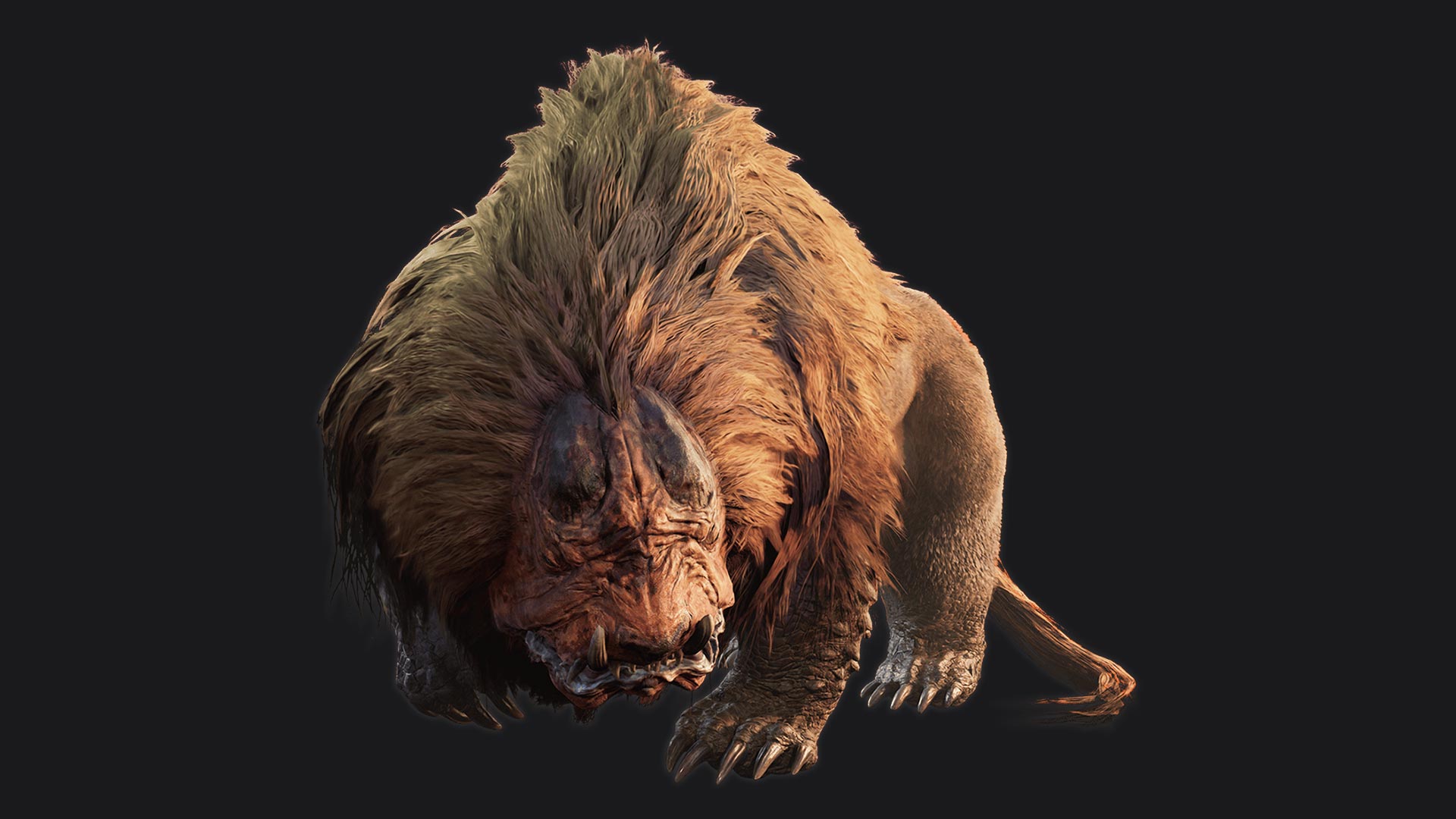
Engaging a Doshaguma requires careful planning, awareness of the environment, and a healthy respect for their brute strength and unpredictable attacks.
➤ Balahara
Balahara is a long, serpentine Leviathan with a body shape similar to Agnaktor and Lagiacrus. Its body is covered in small, brownish-gray scales that grow larger and sharper on its sides. It has four short legs and a long drill-like tail. The Balahara's most distinguishing feature is the unique shape of its head.
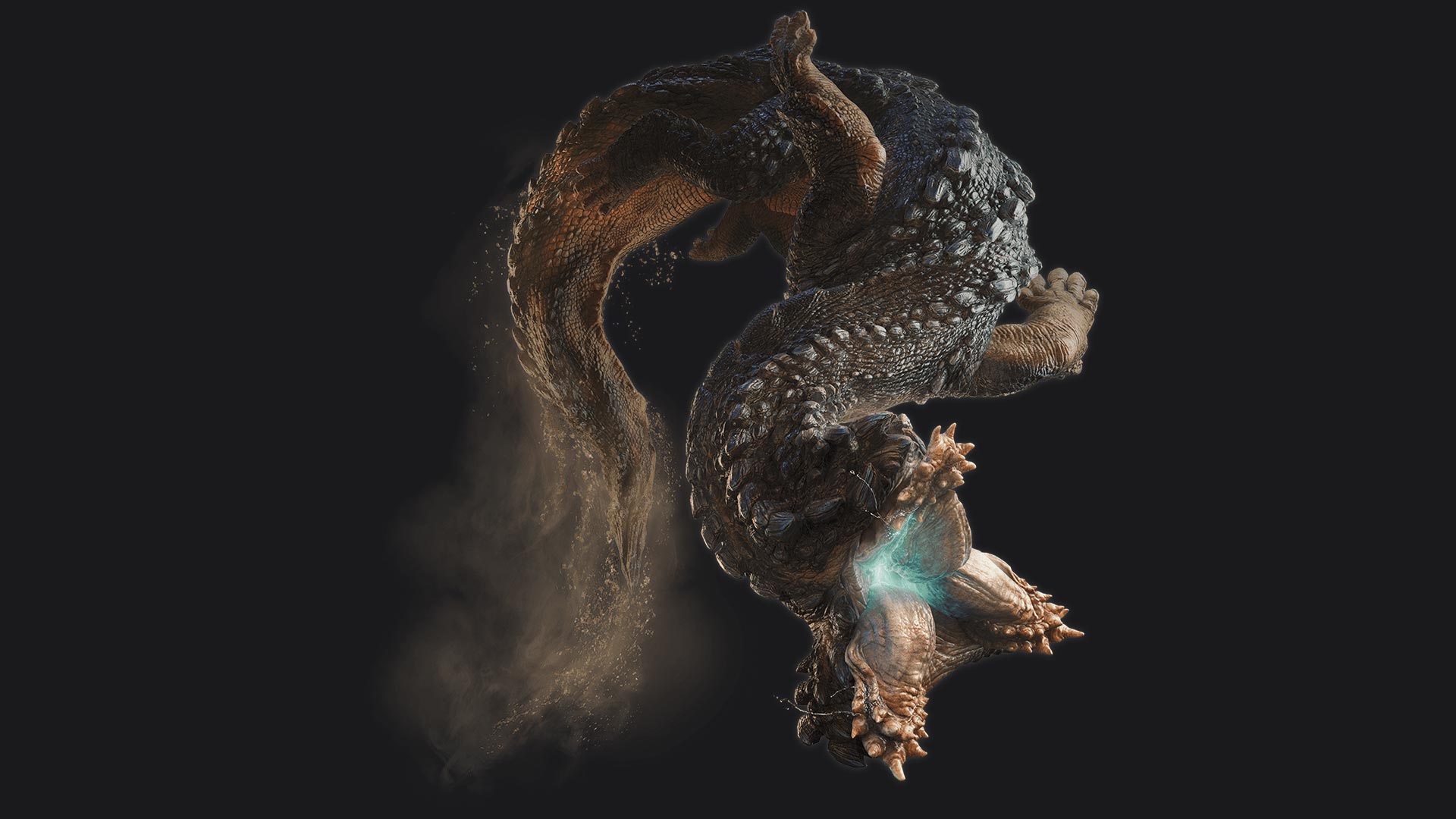
Balahara is a desert-dwelling Leviathan that can swim through the sand. It creates quicksand traps to catch prey, a behavior that seems to be based on the hunting tactic of Antlions. Balahara can also work together in packs to overwhelm larger monsters, such as Doshaguma.
➤ Gypceros
Gypceros one of the largest Bird Wyverns. Its features include a lamp-like crest on top of its head and a shock-resistant hide. Being a smart wyvern, this monster can fake his own death in order to prepare a surprise attack.
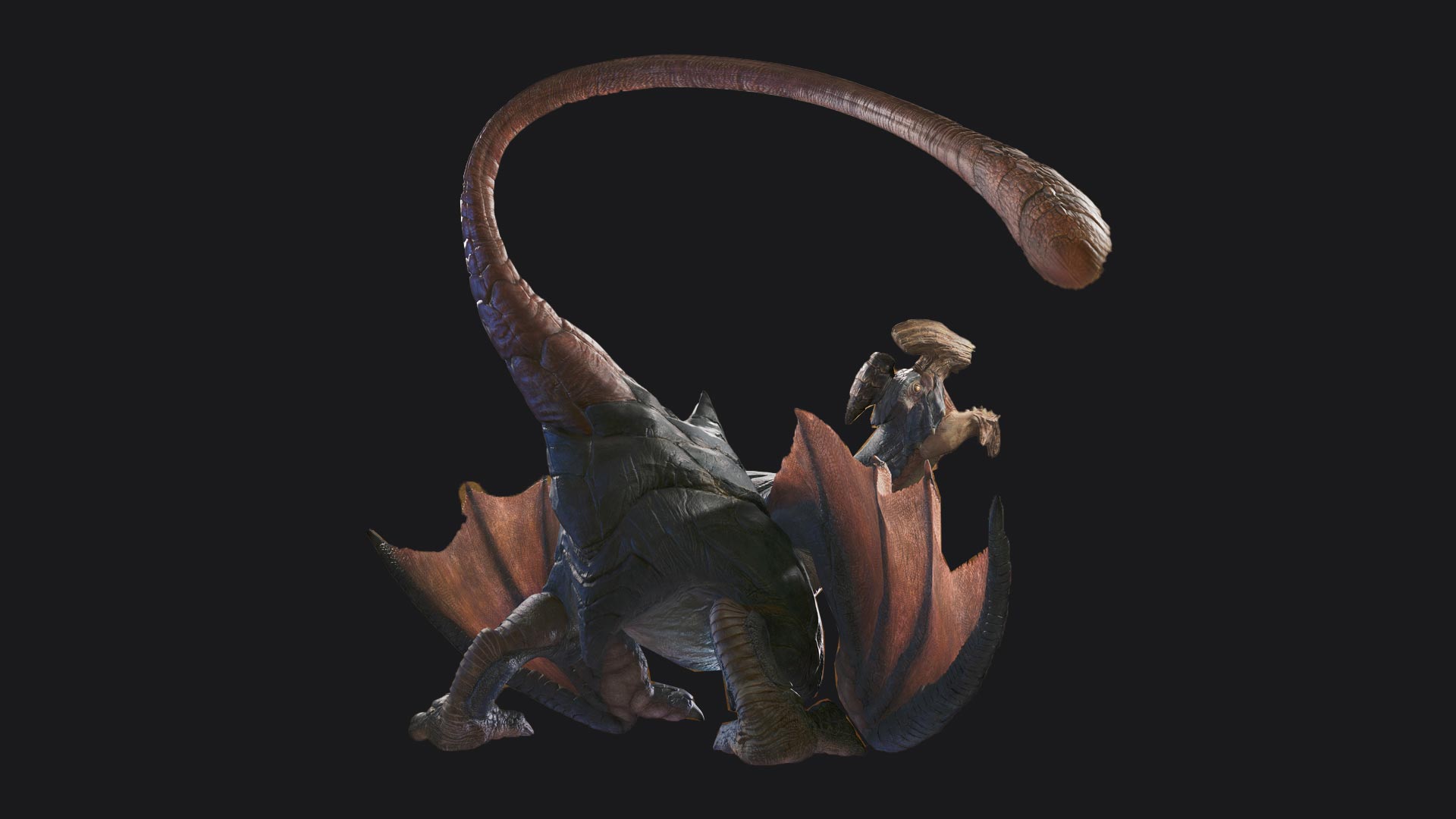
Hunters should approach Gypceros with caution, always wary of its deceptive tactics and prepared for its blinding flashes and venomous attacks. Patience and observation are key to overcoming this cunning Bird Wyvern.
➤ Rey Dau
Rey Dau is a Flying Wyvern covered in bony golden scales, as well as smaller black scales on its underbelly, joints, and wings. Rey Dau is the apex predator of the Windward Plains. It has great control over lightning, appearing during thunderstorms and using the electricity in the air to channel, charge and, fire massive blasts of lightning from its horns.
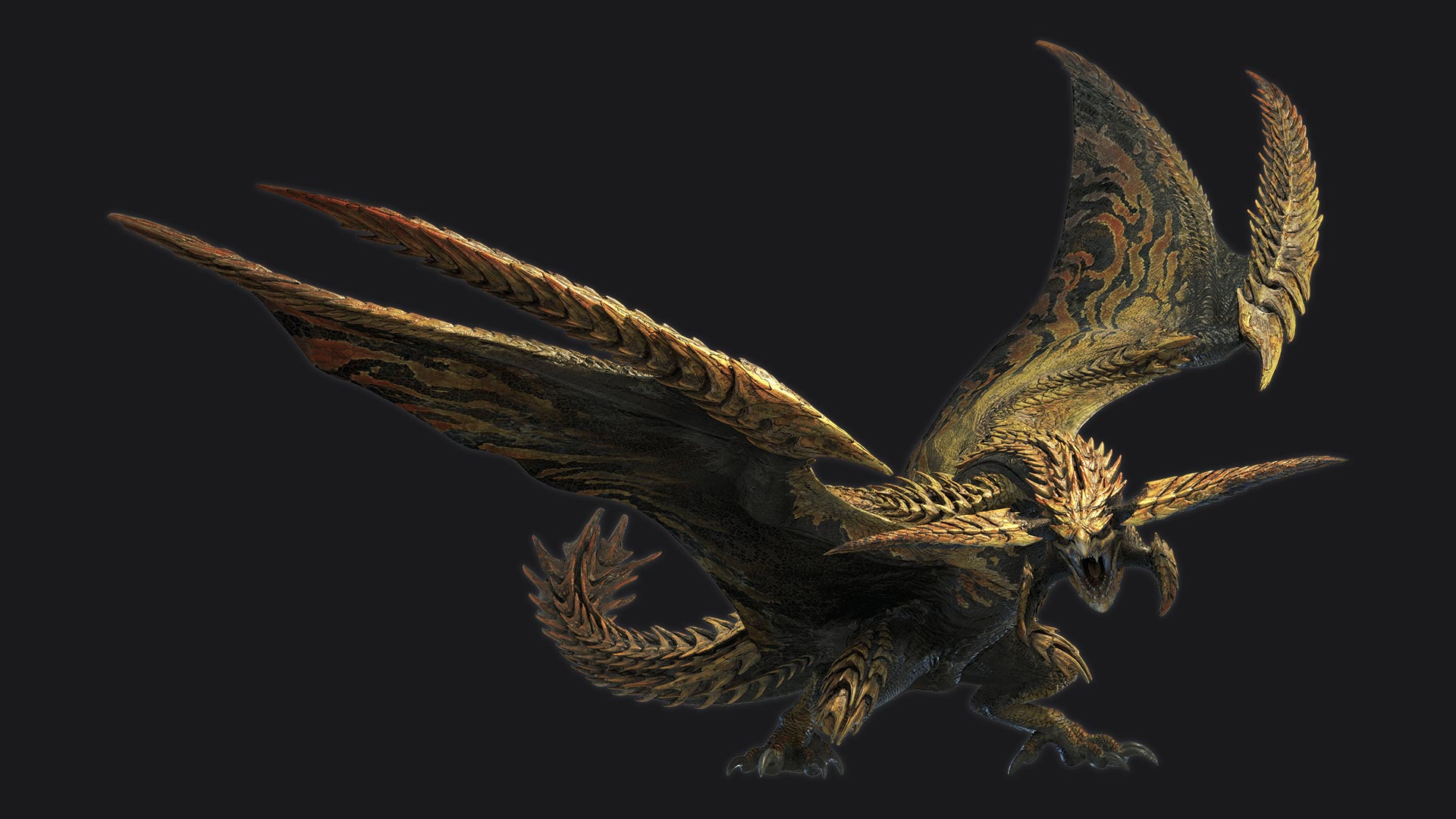
After blasting lightning, the sand on its wings crystallizes into sharp blades of glass, enhancing its attacks. Rey Dau can additionally charge its horns with electricity to stab opponents like an electric spear, as well as using acrobatic aerial attacks while slicing opponents with its bladed wings.
Now with all the information about these monsters at hand, let's see their location and habitats.
KILL ALL MONSTERS EFFORTLESLY!
Where to find monsters?
In Monster Hunter Wilds, monsters can be found almost everywhere, they roam freely across the Forbidden Lands. To find them, you can use your Seikret companion, who has the ability to track monsters.
Note: The dynamic environment plays a key role in the hunt, so I advise you to study monster behaviors, predict their movements, and use the environment to your advantage, setting up ambushes and choosing the right positioning.
Habitats & Endemic Life
Monster Hunter Wilds takes place in the Forbidden Lands, a beautiful yet dangerous region filled with diverse ecosystems. Each location presents a good challenge for hunters, shaped by its endemic life and environmental hazards.
Windward Plains
This area is filled with grasslands, arid deserts, and towering rock formations. Hunters must face sudden sandstorms that reduce visibility and scorching heat that drains stamina. Rey Dau is the apex predator of this region, known for its fast attacks and aerial superiority.
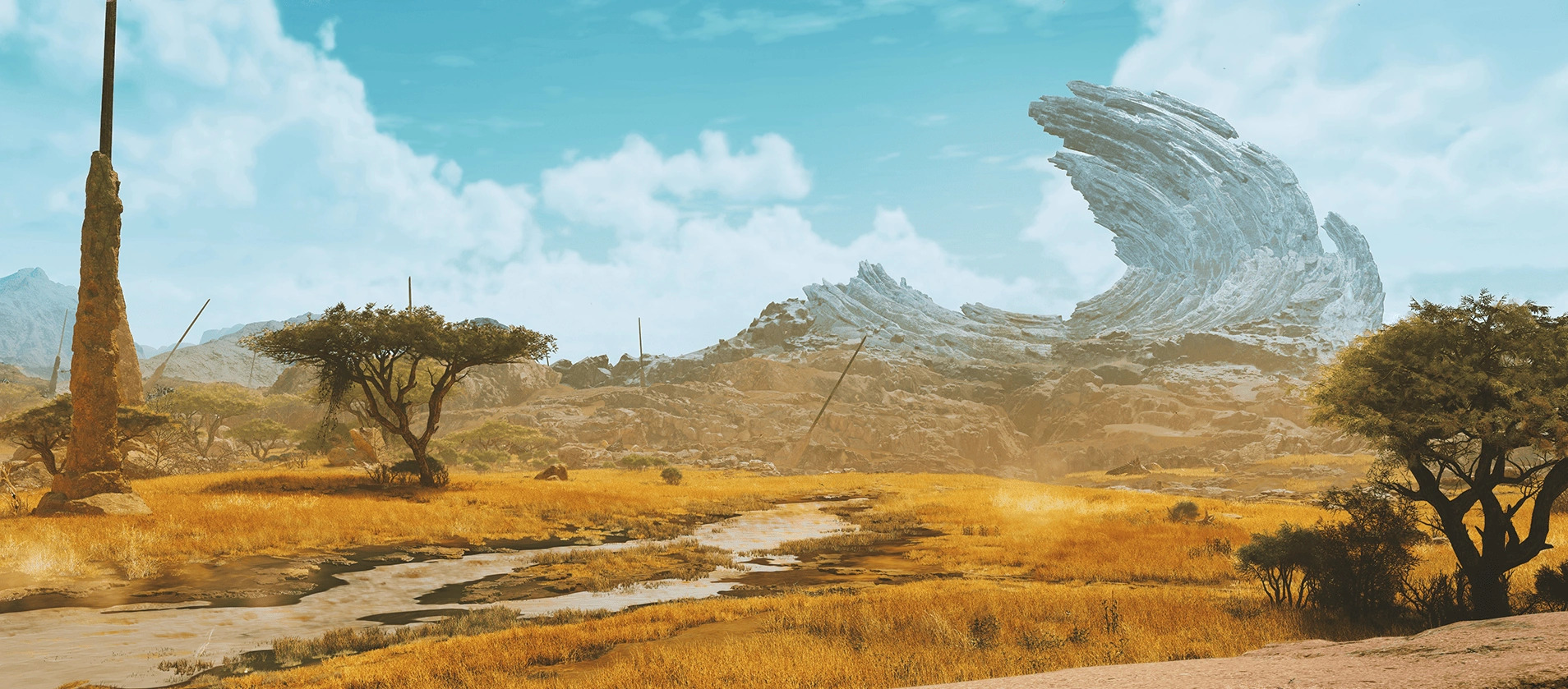
Scarlet Forest
Under tall trees lies a network of waterways and a red river. When heavy rains come, the forest floor floods, making travel and combat harder. The Uth Duna waits below, ready to drag unwary hunters underwater.
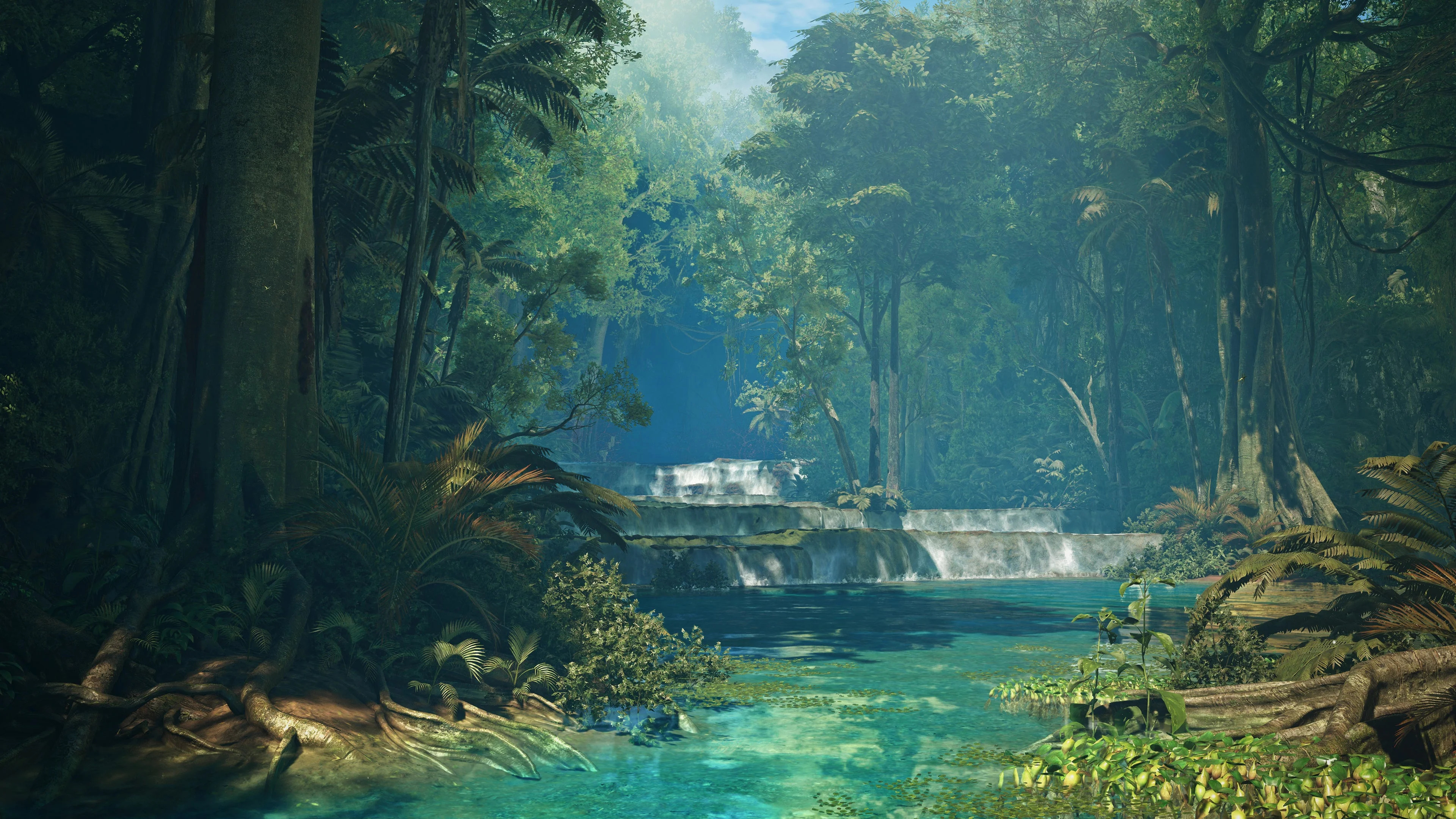
Oilwell Basin
A location where oil seeps from the ground, forming pools of flammable oilsilt. Hunters must be cautious, as a single spark can ignite the volatile environment. The apex predator here is the named "Nu Udra," a colossal fire octopus that can engulf the area in flames.
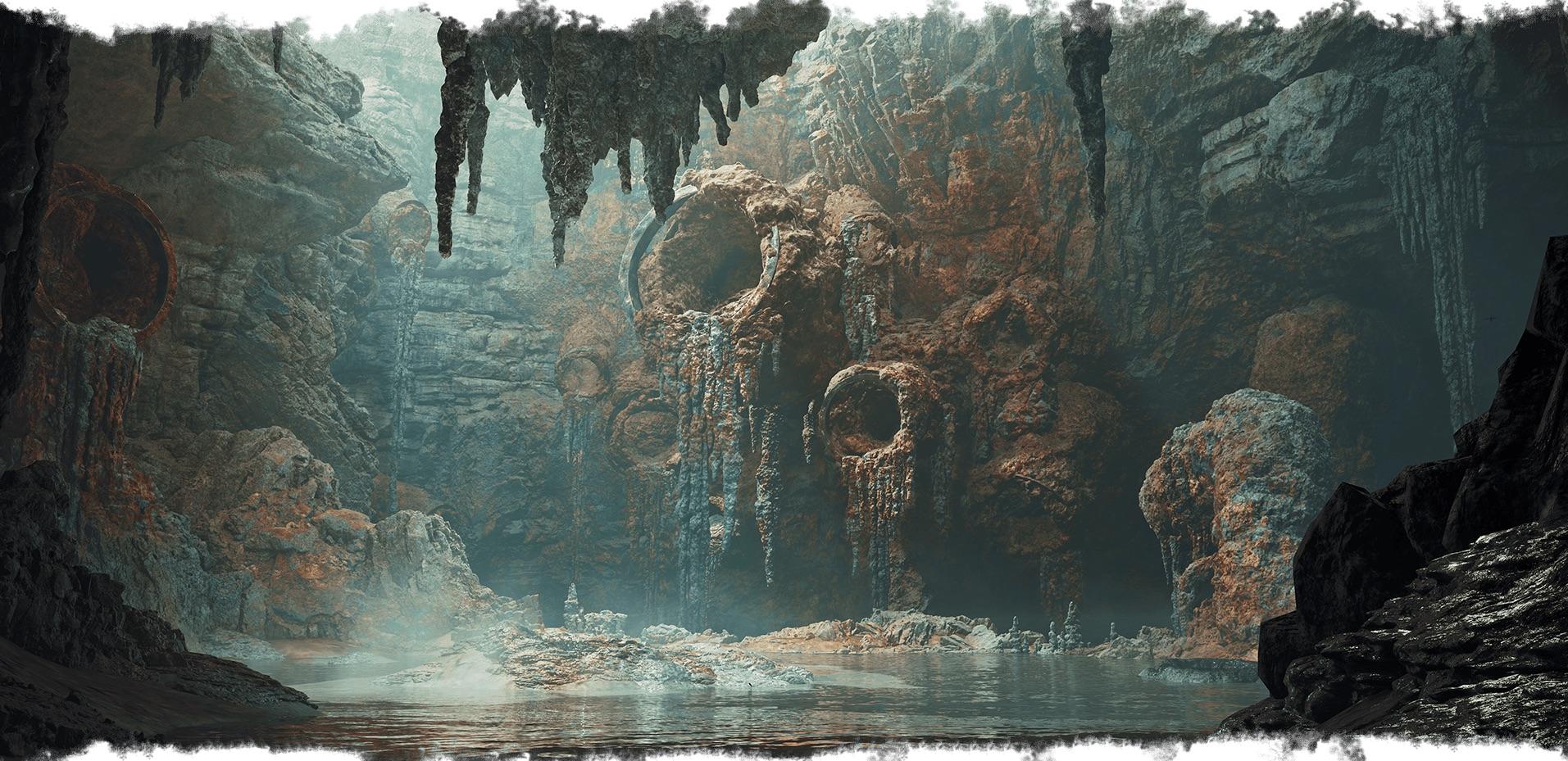
Iceborn Cliffs
This frigid biome features jagged cliffs, blinding blizzards, and treacherous icy terrain. Hunters must contend with freezing temperatures and limited visibility. The apex predator, Arkveld, dominates this region.
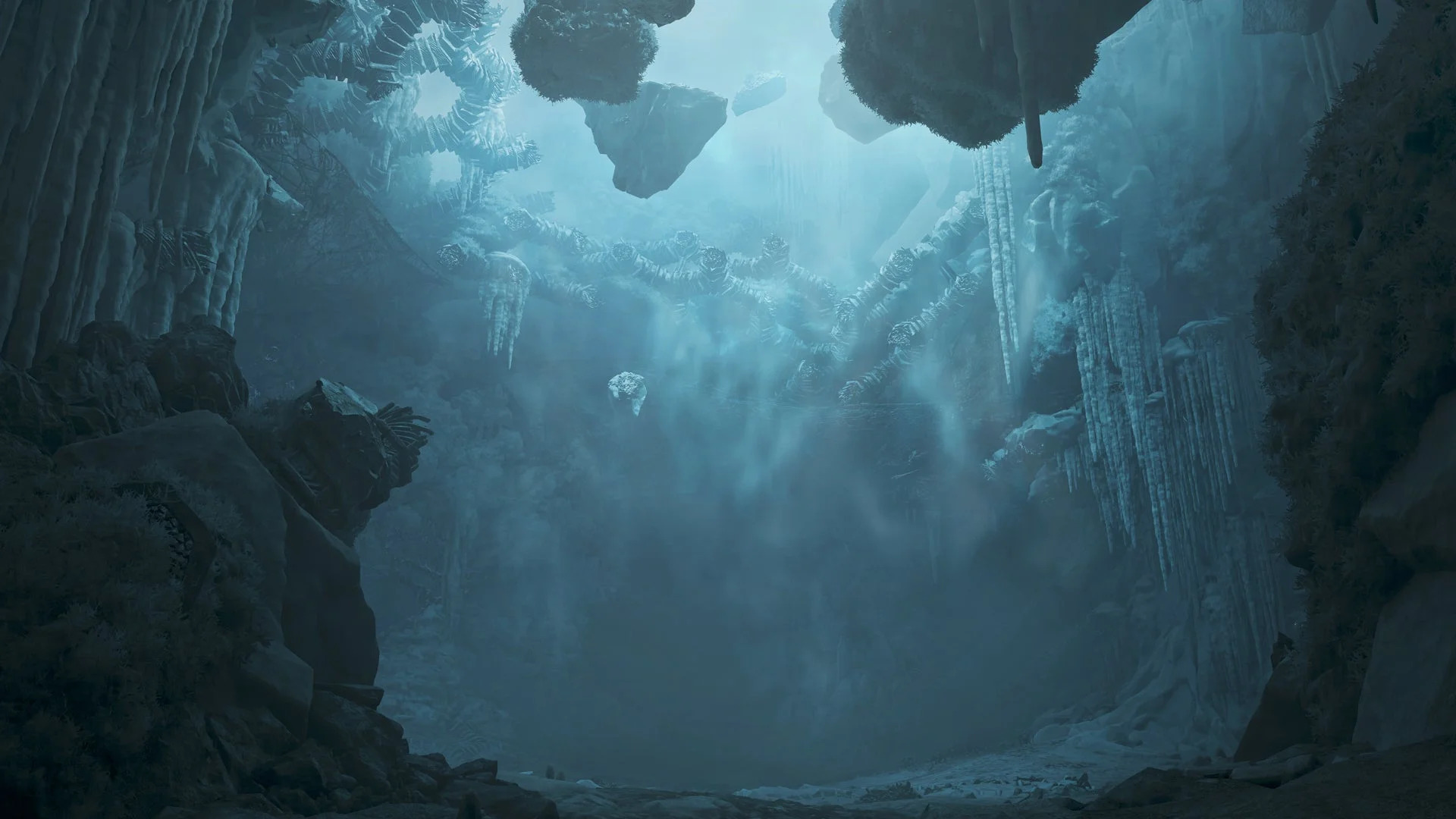
Endemic Life
Beyond the colossal monsters stalking the Forbidden Lands, a host of smaller creatures also makes its home here, some helpful, others more troublesome. Pallbugs can grant a swift burst of healing, while Amstrigian nests yield coveted eggs. Watch out for Conga, always looking to swipe your gear, and keep your distance from the Bomb Beetle its blasts can quickly disrupt your hunt.
Knowing where to find monsters brings us another question; How does their environments behave and how these can change during our hunts?
Dynamic environments
The ecosystem in Monster Hunter Wilds is a living, breathing world that directly impacts every hunt. Weather changes influence monster behavior, migrations shift territories, and disputes erupt between rivals. Adapting to these dynamic elements is key to mastering the hunt.
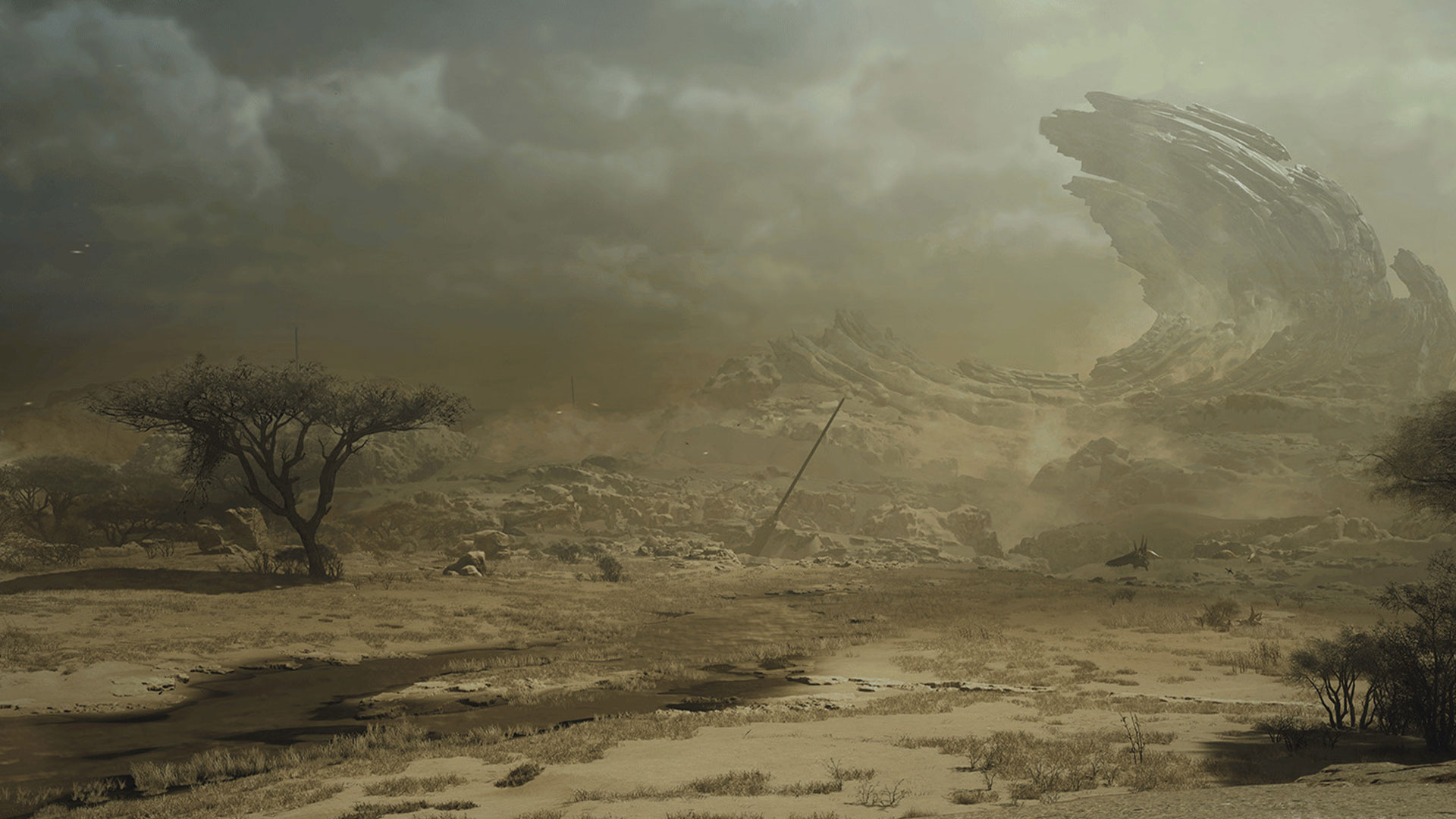
The ecosystem isn't just a background element; it's an active participant in every hunt, and mastering it is the key to overcoming every monster and mastering the game.
Shifting Weather
Weather plays an important role in MH Wilds, while being a new mechanic, we have to look out for it since it can turn the tides against you at any moment. The sky can turn into a torrential downpour at any moment, a simple breeze can become a ragining sandstorm. These changes will make every hunt as unique as possible.
Seasonal Cycles
The Forbidden Lands has a distinct seasonal cycle, which brings a different impact on the ecosystem.
- "Fallow" periods will grant us diminished resources which in return will increase the aggression of the monsters.
- "Inclemency" triggers difficult weather events that can change the environment and make the monsters behave in a unique way.
- "Plenty" offers a lot of resources, attracting a greater variety of creatures and potentially leading to territorial fights between monsters.
Monster Interactions
Monsters never settle in one place, they wander the area, chase the prey and kicking off tense encounters. They also clash over territory, giving hunters a chance to turn those disputes to their advantage.
Environmental Hazards
The ever-changing environment presents a range of hazards like:
- Flash floods that sweep hunters away.
- Lightning strikse can ruin a hunt in seconds.
- Falling rocks and unstable terrain can create obstacles.
- Volcanic eruptions or toxic gas leaks can poison the air you breath.
From dynamic environments to a diverse roster of monsters, Monster Hunter Wilds promises a thrilling hunting experience. Next let's reveal the number of monsters that await you.
How many monsters are in MH Wilds?
Monster Hunter Wilds features a lineup of over 30 large monsters. The roster includes new flagship species like Arkveld, apex predators such as Rey Dau, and returning favorites like Rathalos and Rathian.
With a range of creatures from nimble beasts to powerful flying wyverns, each hunt brings its own set of challenges. Alongside the well-known monsters, you'll also encounter surprising newcomers, each with its own behavior and attack style.
In addition to the big monsters, the Forbidden Lands are filled with smaller wildlife that can offer useful resources, lend a hand in combat, or present unique challenges of their own.
Will there be new monsters in MH Wilds?
Yes, Monster Hunter Wilds brings fresh challenges with new monsters like Arkveld, Ajarakan, and Balahara each with its own design and way of fighting. Hunters will also face the odd Chatacabra, which uses its surroundings to boost its attacks, and Rey Dau, the lightning-fast apex predator of the Windward Plains.
MH Wilds Legacy Monsters: All returning Beasts
Monster Hunter Wilds welcomes back some fan-favorite monsters alongside its new additions. Returning veterans include the iconic Rathalos and Rathian, the armored Gravios, the flatulent Congalala, and the deceptive Gypceros.
These legacy monsters have been updated with new moves, improved AI, and enhanced visuals, offering a taste of classic encounters for newcomers.
Their return honors the series' history and provides another opportunity to face off against some of the most iconic beasts in Monster Hunter history.
Monsters Classification by Scale
Monster Hunter Wilds classifies monsters by scale, indicating their size and threat level. Small monsters, like Dalthydon, are common but can be dangerous in groups. Large monsters are the main hunting targets, ranging from Low Rank to High Rank and culminating in Apex Monsters.
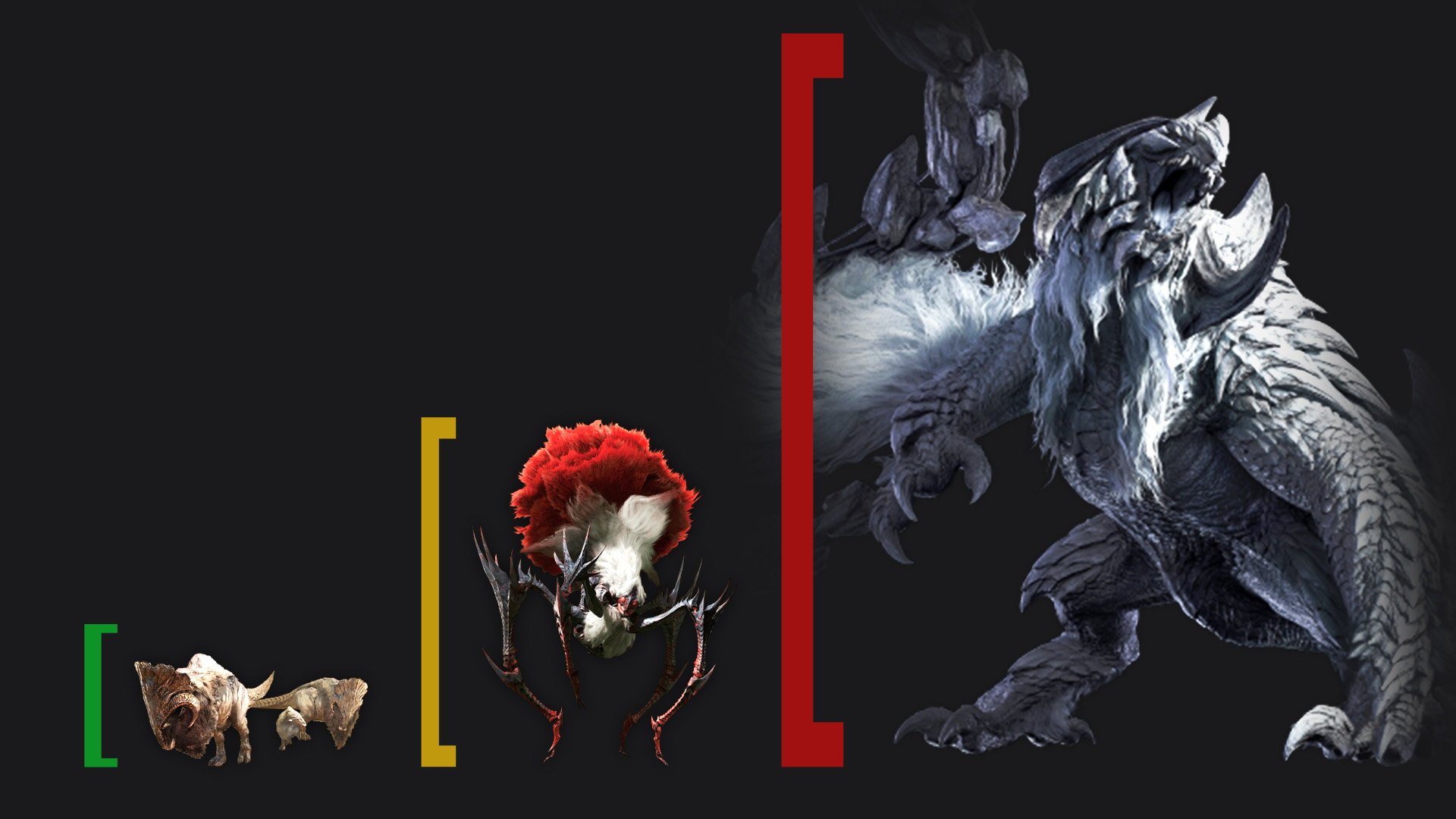
Small Monsters
While large monsters take the spotlight, Monster Hunter Wilds features a variety of small monsters that enrich the ecosystem and impact hunts. These creatures can be both beneficial and troublesome for hunters.
Some notable small monsters include:
- Dalthydon
- Ceratonoth
- Conga
- Talioth
- Baunos
These monsters can offer necessary resources but at the same time they can disturb the hunts by stealing, swarming or alerting large monsters.
Large Monsters
Large creatures are the main emphasis of the Monster Hunter Wilds assignment. These enormous creatures prowl the Forbidden Lands, offering a variety of challenges to hunters and amazing prizes once felled.
Some notable large monsters include:
- Doshaguma
- Gypceros
- Lala Barina
- Quematrice
- Ajarakan
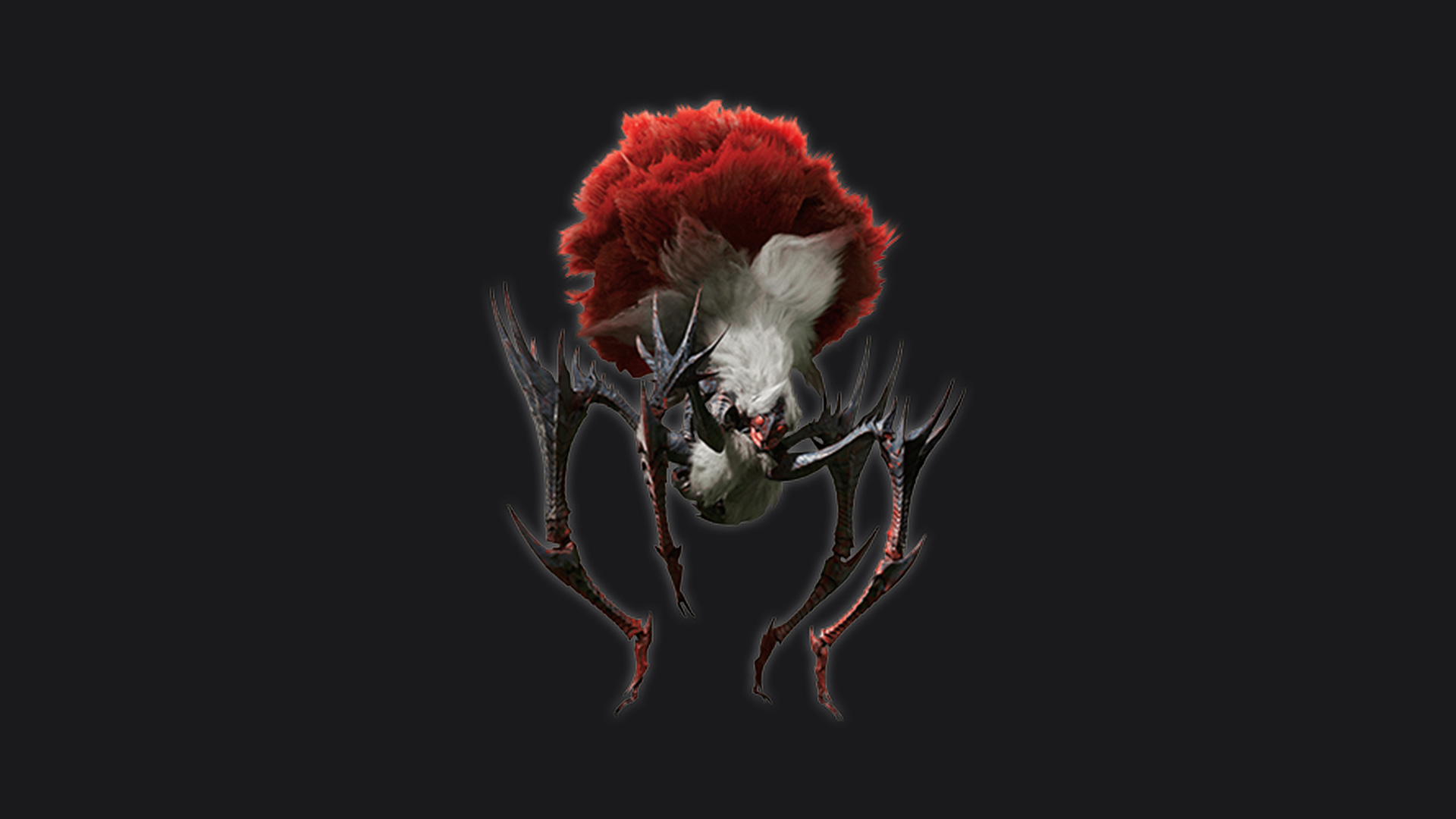
Now that we talked about classification by scale, let's go over a monster classification by type and archetype.
Monsters Classification by Type
In MH Wilds, understanding monster types is crucial for effective hunting. This section breaks down common classifications, from nimble Bird Wyverns to powerful Apex Predators, to help you prepare for any encounter.
Monster Types
- Bird Wyverns: Winged creatures that resemble birds of prey or ancient raptors.
- Fanged Wyverns: Four-legged monsters combining traits of mammals and reptiles.
- Fishes: Non-wyvern creatures found in the water bodies of the Forbidden Lands.
- Flying Wyverns: Classic winged beasts known for their aerial skills and elemental attacks.
- Piscine Wyverns: Fish-like monsters adapted for life underwater.
- Leviathans: Creatures that live on both land and water, often seen in swamps or deserts.
- Wingdrakes: Typically not hunted, these monsters are useful for gathering materials or distracting foes.
- Temnocerans: Spider-like monsters known for their web-spinning and venomous strikes.
- Carapaceon: Crab-like beings with hard shells and powerful claws.
- Amphibians: Creatures adapted for both land and water life.
- Fanged Beasts: Agile, fierce monsters with features resembling primates or canines.
- Snake Wyverns: Serpentine monsters with elongated bodies and venomous fangs.
- Brute Wyverns: Strong, land-based predators that bear a dinosaur-like appearance.
- Unknown: A category for monsters that don't fit conventional classifications.
Monster Archetypes
- The Brute: Relies on raw power and aggression to overwhelm foes (e.g., Ajarakan, Gravios).
- The Agile Predator: Uses speed and nimbleness to outmaneuver opponents (e.g., Doshaguma, Rey Dau).
- The Cunning Trickster: Employs deceptive tactics and clever strategies to gain the upper hand (e.g., Gypceros, Chatacabra).
- The Defensive Tank: Boasts heavy armor and exceptional resilience, withstanding a lot of punishment (e.g., Gravios, Arkveld).
- The Environmental Master: Takes full advantage of the surroundings during combat, turning the environment into a weapon (e.g., Balahara).
- The Pack Leader: Leads groups of smaller creatures, coordinating attacks (e.g., Doshaguma).
Will there be new monster types?
There's no official word on any new monster types for Monster Hunter Wilds yet.
Monster Hunter Wilds Hybrid Species
No hybrid monsters have been confirmed. While the "Unknown" Arkveld might be a hybrid, that hasn't been verified.
Monster Elements
Monster Hunter Wilds introduces various elemental types that both monsters and hunters can use in combat. Each element brings different tactics, allowing hunters to take advantage of a monster’s specific weaknesses and resistances
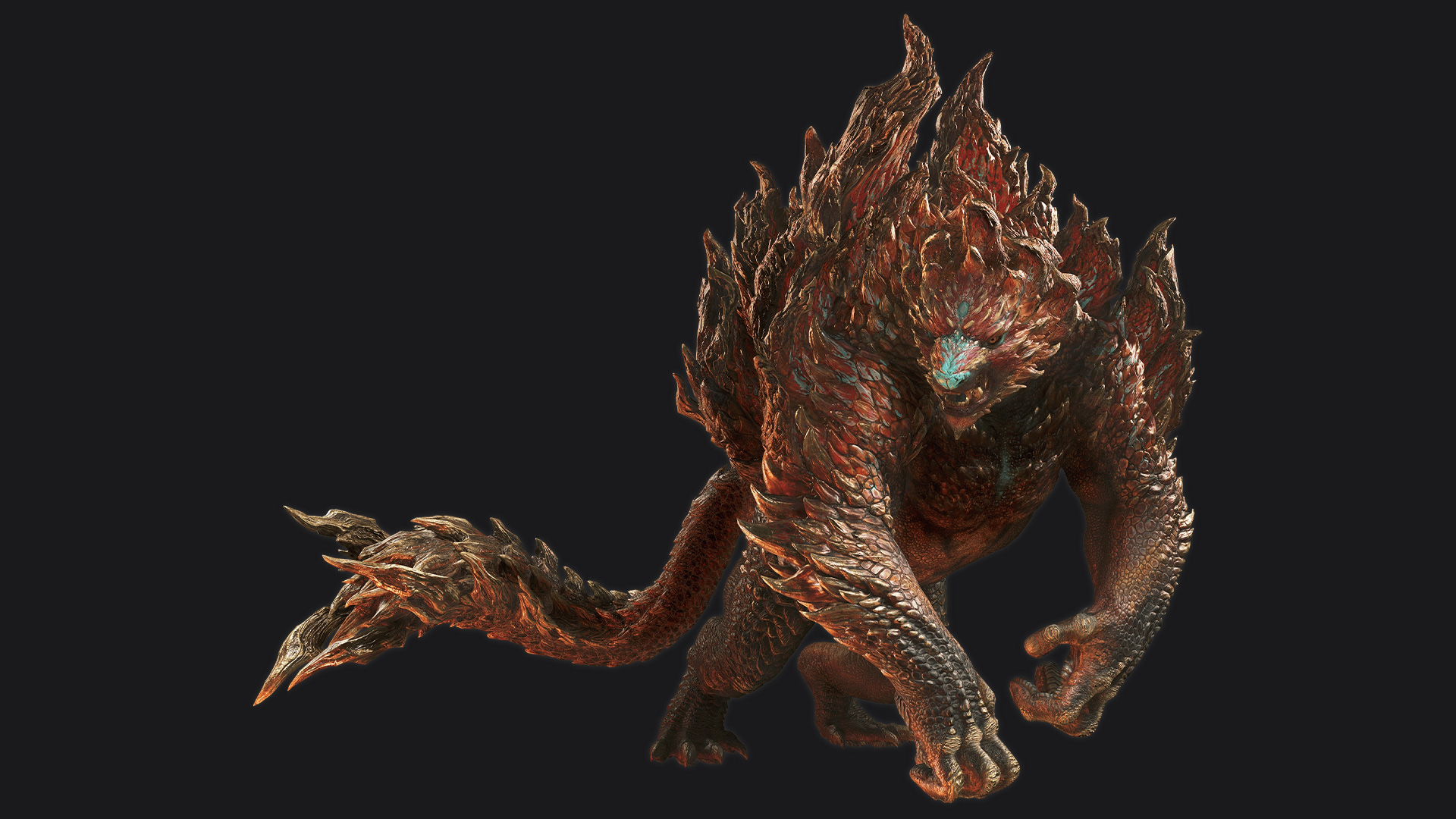
Fire: This classic element deals fire damage and can inflict Fireblight, which causes ongoing damage over time.
Water: This element deals water damage and can inflict Waterblight, which reduces stamina recovery.
Thunder: This element deals thunder damage and can inflict Thunderblight, increasing the likelihood of being stunned.
Ice: This element deals ice damage and can inflict Iceblight, slowing down movement and attack speed.
Dragon: This unique element deals dragon damage and can inflict Dragonblight, which reduces elemental resistances.
Elemental Evolutions
- Core Elements: Fire, Water, Thunder, Ice, and Dragon.
- Shifting Environments: Weather and enviroment influence how these elements function.
- Elemental Blights: Iceblight slows monsters down, while Thunderblight leaves them more vulnerable to stuns.
- Environmental Dynamics: Elements now interact with the environment, opening up new tactical options.
- Targeted Focus: A new mode lets you aim at specific parts of monsters for more precise damage.
- Weapon Tweaks: Some weapons have been refined to deal elemental damage more effectively and trigger blights reliably.
Understanding monster elements and attack patterns is key to successful hunts in MH Wilds. Let's observe the difficulty of these monsters and their weaknesses.
Monsters Difficulty
Monster difficulty in MH Wilds is a complex mix of elemental types, status effects, size, enviroment, strategic thinking and skillful execution. Factors that determine the difficulty include:
- Monster size and strength: Bigger monsters are generally tougher.
- Monster type and abilities: Different monsters have different strengths and weaknesses.
- Hunter's skill and equipment: Better hunters with better gear have an easier time.
- Environment: Weather, terrain, and other monsters can make hunts more challenging.
- Multiplayer vs. Solo: Hunting with others players can make things easier but keep in mind the health of the monster increases by the number of players.
Story Monsters
Some monsters in Monster Hunter Wilds are extra important to the story! They're not just tough fights, they help tell the story of the Forbidden Lands and its secrets. These special monsters include:
- Arkveld (The White Wraith): A mysterious Flying Wyvern with unique chain-like appendages.
- Doshaguma: A fierce fanged beast that travels in packs.
- Apex Monsters: Dominant predators like Rey Dau and the Black Flame.
- Balahara and Uth Duna are monsters tied to weather and seasons.
End Game Monsters
The toughest monsters in Monster Hunter Wilds are waiting for you at the end of the game. Get ready for some really challenging fights and awesome rewards. Here are the kinds of monsters you might face:
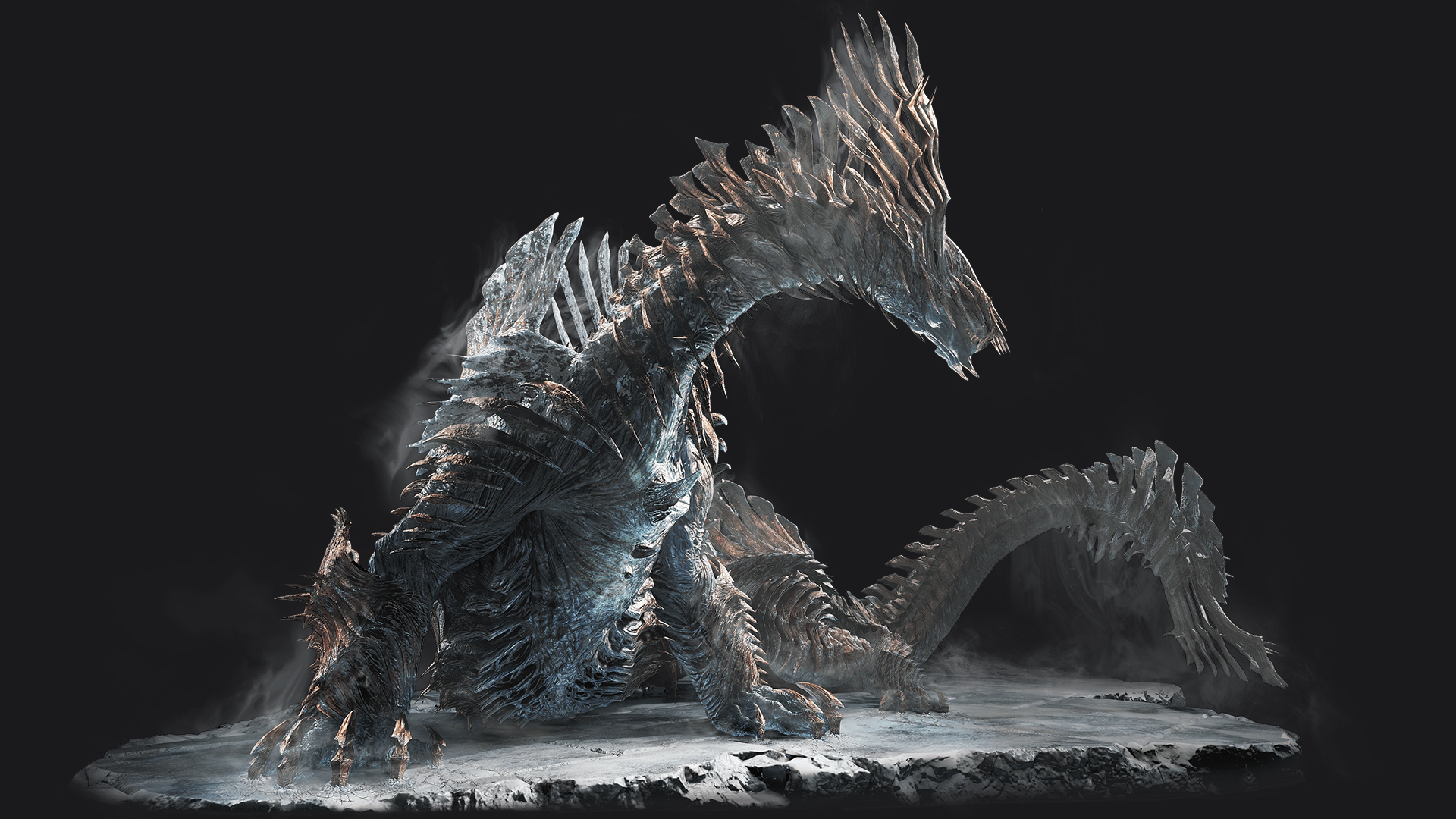
- Apex Monsters: The strongest monsters in each area, like Rey Dau (super fast with lightning discharge) and the Black Flame (giant fire octopus).
- Variant Monsters: Even stronger versions of normal monsters, with new moves and attacks.
- "Legendary" Monsters: Maybe even stronger than Apex monsters, with a connection to the story.
- Post-Launch Content: Even more tough monsters might be added to the game later.
Tips & Tricks
In the list below we have outlined some pro tips & tricks to help you prepare for the most challenging hunts in MH Wilds:
- Keep Your Weapon Sharp: Regularly sharpen your weapon to keep your attacks effective.
- Upgrade Your Gear: Better weapons and armor improve your chances in a fight.
- Eat Before Hunts: Meals provide buffs that boost your stats and performance.
- Master Monster Riding: Use Wyvern Riding to control monsters and deal heavy damage.
- Focus and Strike: Attack weak spots to maximize damage and take monsters down faster.
- Combine Items: Create traps and tools to gain an edge in battle.
- Use Environmental Hazards: Take advantage of natural traps to stun or injure monsters.
- Apply Status Effects: Inflict poison, paralysis, or sleep to weaken monsters and create openings.
Browse our FAQs for answers to common questions about the monsters in MH Wilds.
MH Wilds All Monster FAQs
How many monsters will be in MH Wilds?
Over 30 big ones are confirmed, with more likely to come.
Will there be new monster types in MH Wilds?
Not yet, but there might be some new variations within the types we know.
Are there any new monster in MH Wilds?
Yes, we will have a lot of new monsters like Arkveld, Ajarakan, Balahara, Rey Dau, and many more to come.
Are there any returning monster in MH Wilds?
Some classics are back, like Rathalos, Rathian, Gravios, Congalala, and Gypceros.
What are Apex Monsters?
Apex Monsters are the strongest in their area. They're super tough and usually part of the story or end-game.
What is changed about the environment?
The developers introduced a new feature caleld dynamic environment, which will influence every hunt with volatile weather, changing terrain, and surprise monsters appearances will make every hunt unique.
We hope these FAQs have answered your questions. Now for the final part of this guide we will go over our conclusion on the Monsters from MH Wilds.
Final Thoughts
This guide along with our weakness chart has equipped you with the knowledge and the best strategies to face all monsters in Monster Hunter Wilds. Remember to study your prey, master your weapons, and adapt to the dynamic environments of the Forbidden Lands. Now it is time to go forth and become the ultimate hunter!
About KBoosting
Thank you for taking the time to read our guide about Monster Hunter Wilds Monsters. Did you know that at KBoosting, we are not only about guides and articles? We also provide boosting services to make things even easier for you. Check out our MH Wilds boosting services, let us handle everything for you, while you have some real fun in the game!


